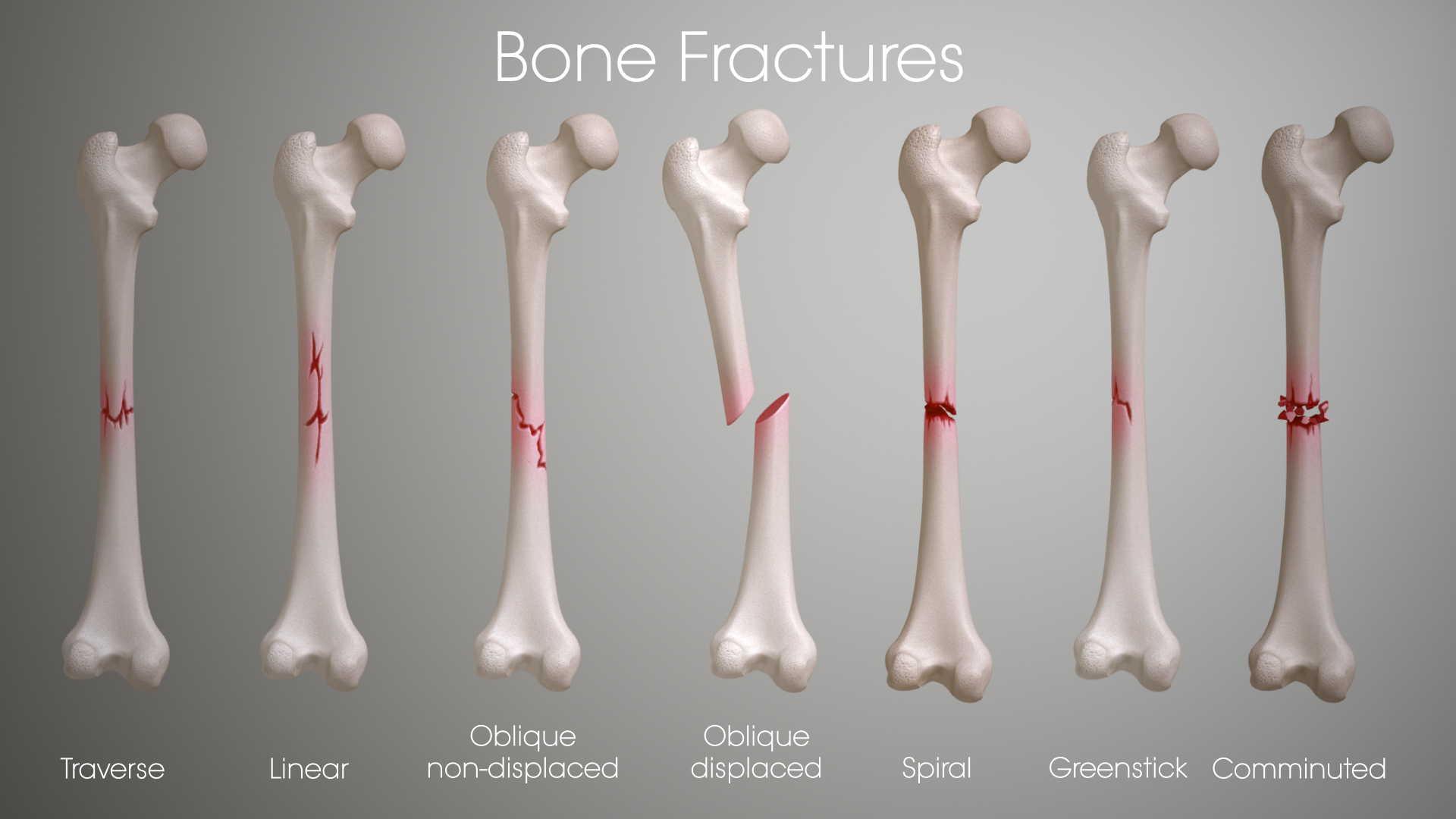Any injury to the bone resulting in damage is a fracture.

Most fractures occur due to the high impact of force, such as falls or accidents, but some may happen without too much strain on the bones because the bones are weak due to certain medical conditions such as osteoporosis or some cancers.
Types of fractures
There are several types of fractures, but the most common ones are:
- Stable fracture is one in which the broken ends of the bone are still in line.
- Closed fracture is also called a simple fracture. The skin is not affected by the damaged bone.
- Open fracture is one in which the skin is pierced by the bone.
- Transverse is when the fracture travels across the bone.
- Oblique fracture is the kind of fracture that occurs at an angle.
- Comminuted fracture is when the bone is shattered into a minimum of three pieces.
- Spiral fracture is when the fracture goes down the length of the bone.
Symptoms
The most common symptoms of fractures are, sweling, pain, bruising, not being able to put weight on the affected area, loss of function in the fractured area, immobility of the injured part and in some cases where the broken bone pierces the skin, there may be bleeding.
Causes
The common cause for fractures are:
- A bad fall
- Automobile accident
- Osteoporosis
- Stress fractures which are caused due to repetitive strain on muscles and bones usually in case of professional athletes.
Treatment
The most common way to assess fracture is to carry out an x-ray. In some cases, MRI or CT scan may also be required. Healing of fractures is a natural process done by the body automatically, but the broken bones have to be aligned properly and held in place for healing to take place. Serious fractures may need surgery in which external devices such as pins, plates, rods or screws may be used to reposition the bones. After the bones have been set, they are usually immobilized by using a cast. The cast is usually prescribed for 6 - 8 weeks or more. The medicines used in the treatment of fractures are mostly only pain killers in case of simple fractures and painkillers and antibiotics in some case of fractures that have required surgery. After the bones have healed and the cast comes off, physiotherapy and exercise are usually required to mobilize and strengthen the bones.
It is important to keep the bones strong so as to minimise the damage to them in case of accidents. Nutritious food rich in calcium and Vitamin D to help absorb the calcium, are both extremely important for healthy bones. Along with a diet rich in calcium and Vitamin D, regular physical activity including strength bearing exercises are also extremely important and can help prevent fractures.
Disclaimer: The information in no way constitutes, or should be construed as medical advice. Nor is the above article an endorsement of any research findings discussed in the article an endorsement for any of the source publications.
Sources-
- https://orthoinfo.aaos.org/en/diseases--conditions/fractures-broken-bones/
- https://www.medicalnewstoday.com/articles/173312.php
- https://www.webmd.com/a-to-z-guides/understanding-fractures-treatment#2
Sciatica happens as a result of irritation of the sciatic nerve (the largest nerve in the body) beginning in the lower back and extending down to the lower limb.
Read More..
The bones of the skeletal system play several key functions for the body, from providing the body support to allowing to move. They serve a vital role in fat storage and blood cell production as well.
Read More..











